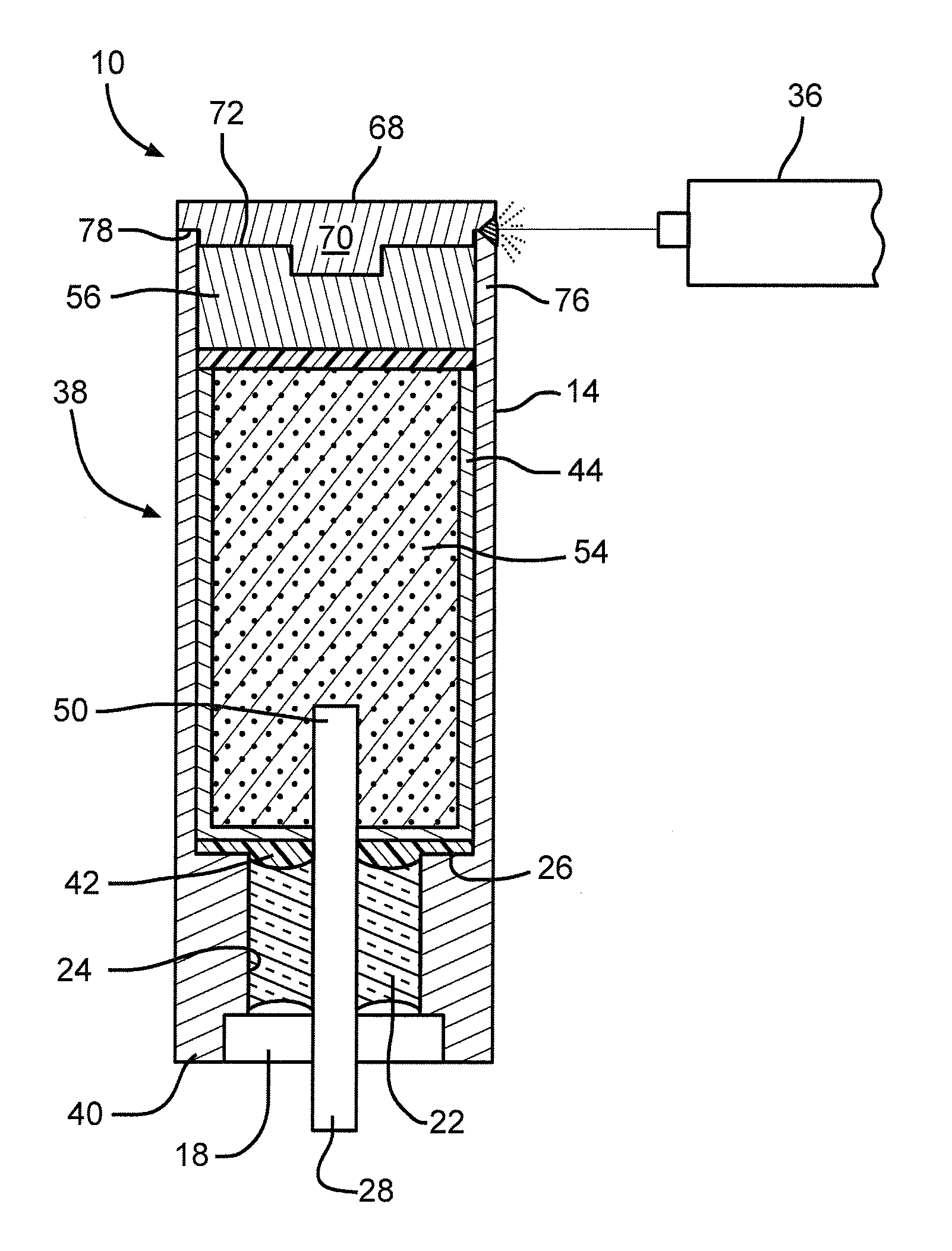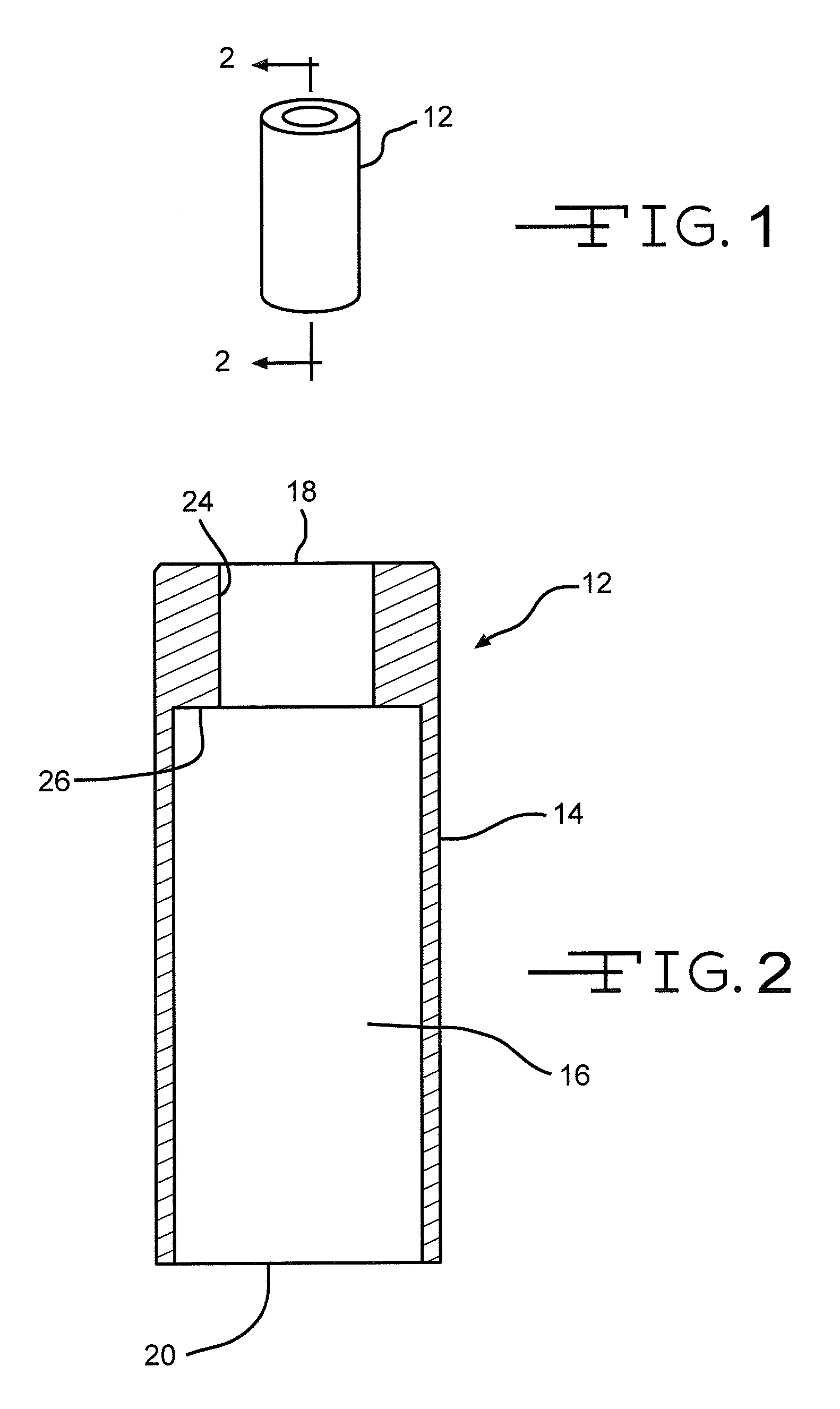Highly Compact Electrochemical Cell
a high-compact, electrochemical technology, applied in the field of electrochemical cells, can solve the problems of too large cells such as those of wutz et al
- Summary
- Abstract
- Description
- Claims
- Application Information
AI Technical Summary
Benefits of technology
Problems solved by technology
Method used
Image
Examples
Embodiment Construction
[0030]Turning now to the drawings, FIG. 11 is a perspective view of an electrochemical cell 10 including a casing 12 (FIG. 1) comprised of a sidewall 14 surrounding an enclosed volume 16. The casing 12 has a proximal opening 18 and a distal opening 20 at the respective ends of the sidewall 14. The casing sidewall 14 may have a cylindrical shape, a rectangular shape, a prismatic shape, or certain other irregular shapes that can be made by the processes used to make cell casings. The casing 12 is made of metal, such as stainless steel, titanium, nickel, aluminum, or other suitable electrically conductive materials. One preferred casing material is titanium.
[0031]In a typical prior art electrochemical cell used to power an implantable medical device, the casing is stamped or deep drawn to its final shape and mated and sealed to a lid or a second case half. However, these forming processes cannot achieve the dimensions and tolerances required for the highly compact cells of the present ...
PUM
| Property | Measurement | Unit |
|---|---|---|
| Force | aaaaa | aaaaa |
| Elastomeric | aaaaa | aaaaa |
| Volume | aaaaa | aaaaa |
Abstract
Description
Claims
Application Information
 Login to View More
Login to View More - R&D
- Intellectual Property
- Life Sciences
- Materials
- Tech Scout
- Unparalleled Data Quality
- Higher Quality Content
- 60% Fewer Hallucinations
Browse by: Latest US Patents, China's latest patents, Technical Efficacy Thesaurus, Application Domain, Technology Topic, Popular Technical Reports.
© 2025 PatSnap. All rights reserved.Legal|Privacy policy|Modern Slavery Act Transparency Statement|Sitemap|About US| Contact US: help@patsnap.com



